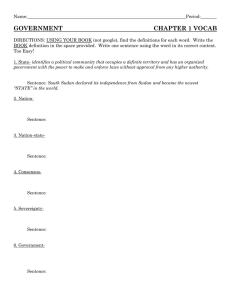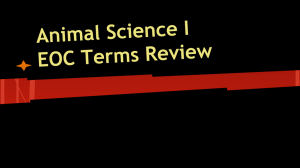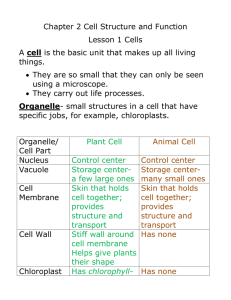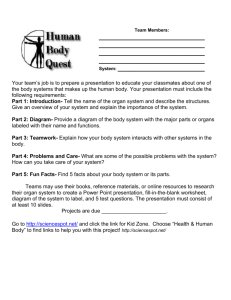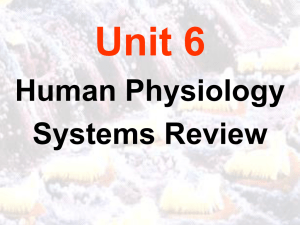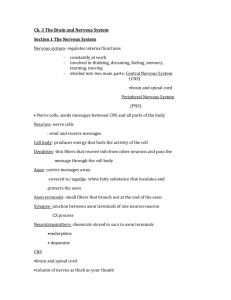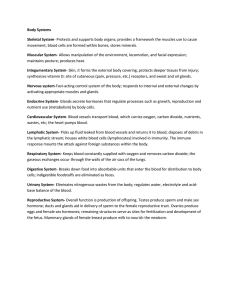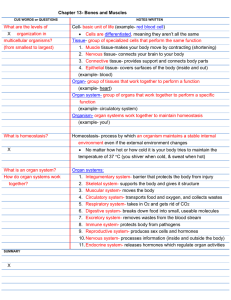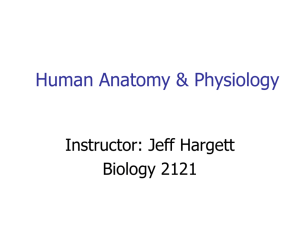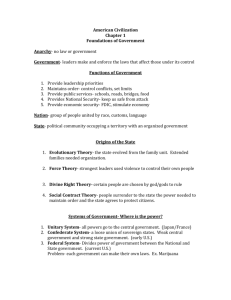Human Physiology Study Guide Final Exam—Study all notes
advertisement
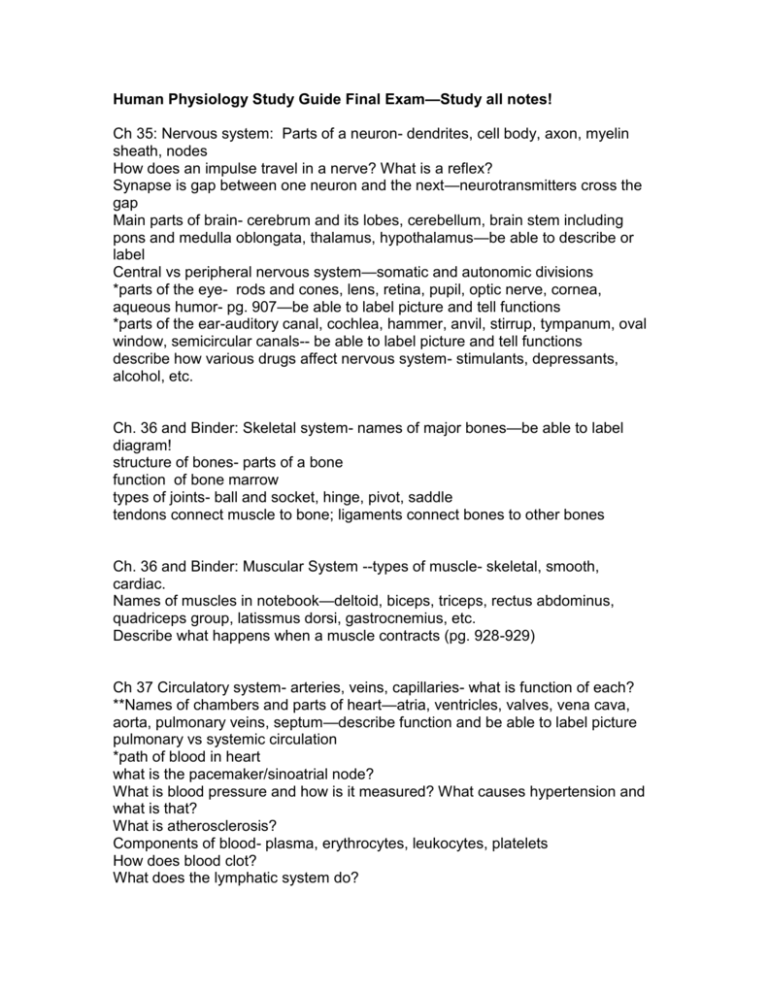
Human Physiology Study Guide Final Exam—Study all notes! Ch 35: Nervous system: Parts of a neuron- dendrites, cell body, axon, myelin sheath, nodes How does an impulse travel in a nerve? What is a reflex? Synapse is gap between one neuron and the next—neurotransmitters cross the gap Main parts of brain- cerebrum and its lobes, cerebellum, brain stem including pons and medulla oblongata, thalamus, hypothalamus—be able to describe or label Central vs peripheral nervous system—somatic and autonomic divisions *parts of the eye- rods and cones, lens, retina, pupil, optic nerve, cornea, aqueous humor- pg. 907—be able to label picture and tell functions *parts of the ear-auditory canal, cochlea, hammer, anvil, stirrup, tympanum, oval window, semicircular canals-- be able to label picture and tell functions describe how various drugs affect nervous system- stimulants, depressants, alcohol, etc. Ch. 36 and Binder: Skeletal system- names of major bones—be able to label diagram! structure of bones- parts of a bone function of bone marrow types of joints- ball and socket, hinge, pivot, saddle tendons connect muscle to bone; ligaments connect bones to other bones Ch. 36 and Binder: Muscular System --types of muscle- skeletal, smooth, cardiac. Names of muscles in notebook—deltoid, biceps, triceps, rectus abdominus, quadriceps group, latissmus dorsi, gastrocnemius, etc. Describe what happens when a muscle contracts (pg. 928-929) Ch 37 Circulatory system- arteries, veins, capillaries- what is function of each? **Names of chambers and parts of heart—atria, ventricles, valves, vena cava, aorta, pulmonary veins, septum—describe function and be able to label picture pulmonary vs systemic circulation *path of blood in heart what is the pacemaker/sinoatrial node? What is blood pressure and how is it measured? What causes hypertension and what is that? What is atherosclerosis? Components of blood- plasma, erythrocytes, leukocytes, platelets How does blood clot? What does the lymphatic system do? Ch 37 Respiratory system- parts: pharynx, trachea, bronchi, bronchioles, alveolibe able to label picture and tell functions. What do cilia and mucus do? How are CO2 and O2 exchanged in the lungs? How does the diaphragm muscle help us to breathe? Ch 38 Digestive and Excretory systems-Nutrition- calories—definition and how many do we need?, benefits of carbohydrates, fats, proteins, water. Know how many calories per gram in each. What is the difference between unsaturated vs saturated fat? What are risks of eating too much fat? Definitions of vitamins and minerals and which vitamins are fat or water soluble. *Parts of digestive system- mouth, esophagus, stomach, small and large intestine—what happens in each part? Parts of small intestine. What is peristalsis? What is chyme? What are villi? What do the pancreas and liver do? What is an ulcer and what causes it? What causes heartburn? Chemical vs mechanical digestion and where they take place. Name what types of enzymes and chemicals are in the major organs—example pepsin in stomach. Excretory System—What do our kidneys do and how do they work? Be able to label a diagram of a nephron like the picture in your binder. What is the function of a glomerulus, tube of Henle, and Bowman’s capsule? Remember that kidney function in both filtration and reabsorption. What materials are filtered out of the blood? What is dialysis? What other organs help in excretion besides the kidneys? Ch 40 Immune system – describe germ theory of disease, what are pathogens? *list 4 steps of Koch’s postulates pg 1032 how are diseases spread and what can affect the rate of spread? what do antibiotics and vaccines do? Nonspecific defenses—keeping germs out, inflammatory response, interferon pgs 1036-1038—what is benefit of fever? Specific defenses- humoral vs cell mediated immunity What are antigens and antibodies? Terms: macrophages, helper t cells, killer t cells, supressor t cells, plasma cells, memory b cells? What do B cells and T cells do? What is problem with T cells in organ transplants? Difference between active and passive acquired immunity Problems in immune system- allergies, asthma. What are histamines? What are autoimmune and immunodeficiency diseases? Examples?
